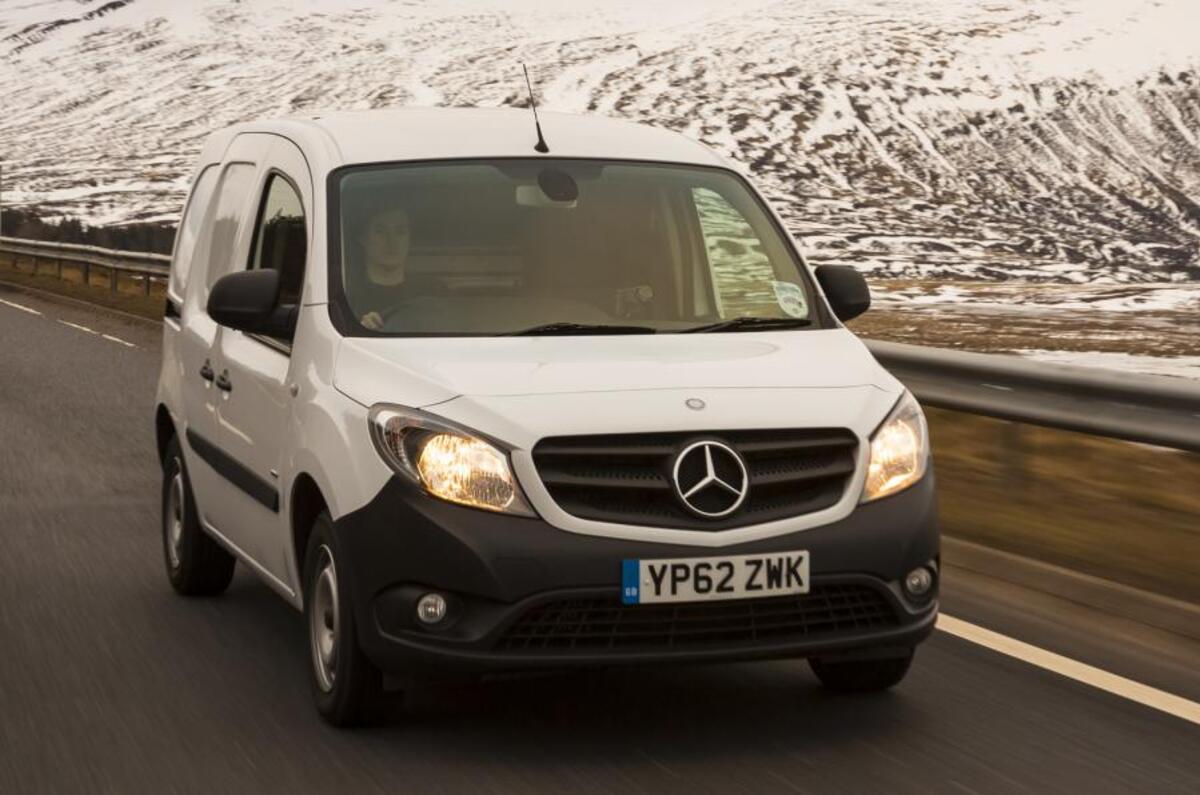The Mercedes-Benz Citan is the smallest van to wear a three-pointed star, and the first product to be born of Merc’s joint venture with Renault. And if you think the Citan looks strangely familiar, you’re right – under the skin you’ll find a Renault Kangoo.
And if that seems a little odd, think of it this way. In 2012, the Kangoo enjoyed a 17.4 percent share of the market. If you’re going to work with someone, you may as well do it with someone who knows what they’re doing.
Mercedes is keen to point out that the Citan isn’t a bit of badge engineering. The suspension, engine and bodywork have been reworked to provide a bit more Mercedes-ness.
There is an impressive number of configurations in the range. There are three wheelbases offered in the panel van range with or without fuel-saving BlueEfficiency kit. And there’s a five-seat Tourer van-derived MPV and a part-van, part-MPV Dualiner which offers up to five seats, plus a large cargo bay. It’s the panel van in BlueEfficiency trim in the mid-length wheelbase that we’re driving here.
Impressively refined. And rather car-like, which bodes well for the Tourer version. Acceleration is perky, although with only a driver and no cargo carried, it ought to be. The five-speed gearbox has a nice positive action, and despite lacking a sixth ratio (that’s reserved for the range-topping 110bhp version), a motorway cruise is possible in relative peace.























